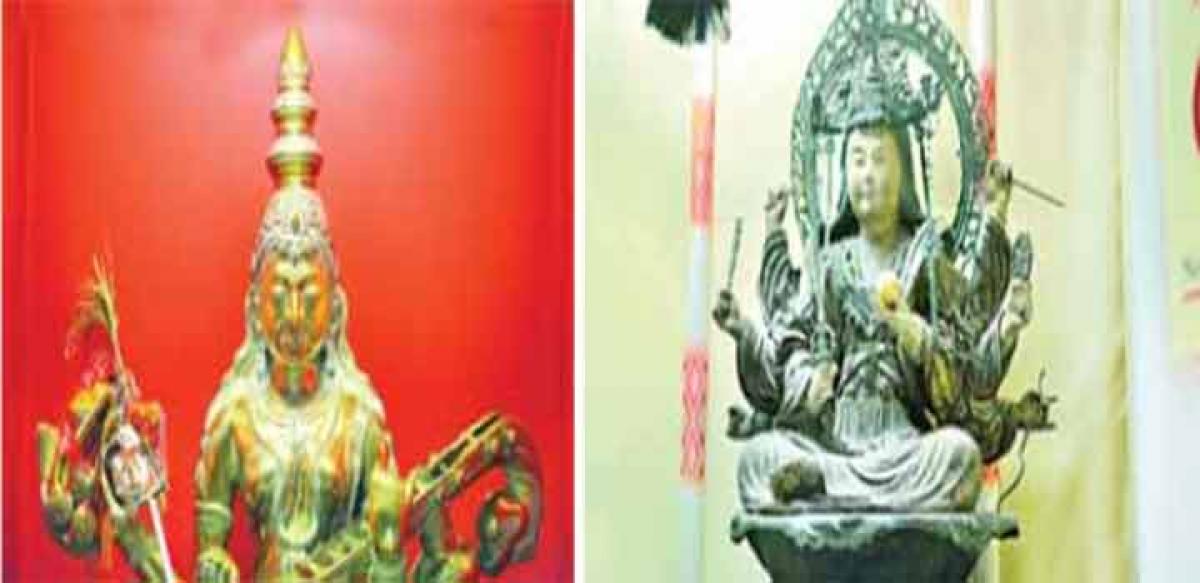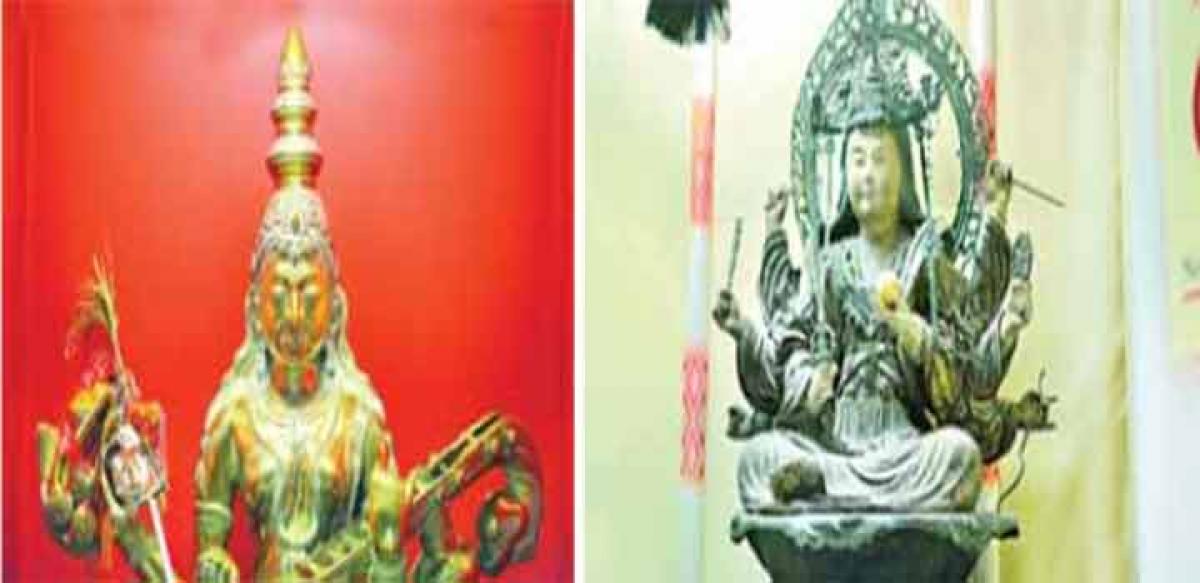Live
- Bridging boundaries: A conservationist’s journey to protect south India’s wildlife and ecosystems
- District science fair conducted
- World's oldest person dies in Japan at 116
- Creative Economy in the Forgotten Theatre Plays
- ONDC can create more opportunities worth Rs.3.75 lakh cr in 5 years
- Healthcare leaders warn of rising lifestyle diseases, call for preventive action
- GMC council meeting turns acrimonious
- India committed to taking the lead in AI: PM
- Shahid Kapoor, Mira Rajput share glimpses of their Maldives getaway
- Meal deals remain a consumer favorite in APAC
Just In

The original concept of Saraswati and her association with the natural order and good fortune are well preserved in Japan.Most people are not aware that at least a score of Hindu deities are actively worshipped in Japan, according to a report by the national magazine Frontline.

The original concept of Saraswati and her association with the natural order and good fortune are well preserved in Japan.Most people are not aware that at least a score of Hindu deities are actively worshipped in Japan, according to a report by the national magazine Frontline.
In fact, there are hundreds of shrines to Saraswati alone. There are innumerable representations of Lakshmi, Indra, Brahma, Ganesha, Garuda and other deities. In fact, deities that have practically been forgotten in India, such as Vayu and Varuna, are still worshipped in Japan.
Yasukuni Enoki, former Ambassador of Japan in India, says: “As I come from the Japanese ‘Lakshmi Town’, it is no great surprise to find that Japanese life is full of so many Hindu deities.
Since these Hindu deities were introduced into Japan through China, with Chinese names, Japanese people are unaware of their origins.” One of the most revered deities of Japan is Saraswati.
There are scores of shrines built to her. There are two kinds of Saraswati, or Benzaiten, in Japan. One is the eight-armed Saraswati and the other is the two-armed one.
In her two-armed form, she has a musical instrument in her hand, which is called veena, or biwa in Japanese. In many ways, the original concept of Saraswati and her association with the natural order and good fortune are well preserved in Japan.
She is often visualised as a sacred body of water. In Japan, one finds the continuance of many early ideas of Indian philosophy.Benoy K Behl is a film-maker, art historian and photographer who is known for his tireless and prolific output of work over the past 36 years.
He has taken over 46,000 photographs of Asian monuments and art heritage and made 132 documentaries on art and cultural history. His exhibitions have been warmly received in 54 countries around the world and he holds the record, in the Limca Book of Records, for being the most travelled photographer.
“I did the research for and took most of the photographs in spring 2015 with the support of a Japan Foundation Fellowship. I am deeply grateful for this valuable support which was provided.
I have also made a film for the Ministry of External Affairs on the subject “Hindu Deities Worshipped in Japan”. My partner Sujata Chatterji is the assistant director of the film,” said Behl.

© 2024 Hyderabad Media House Limited/The Hans India. All rights reserved. Powered by hocalwire.com







